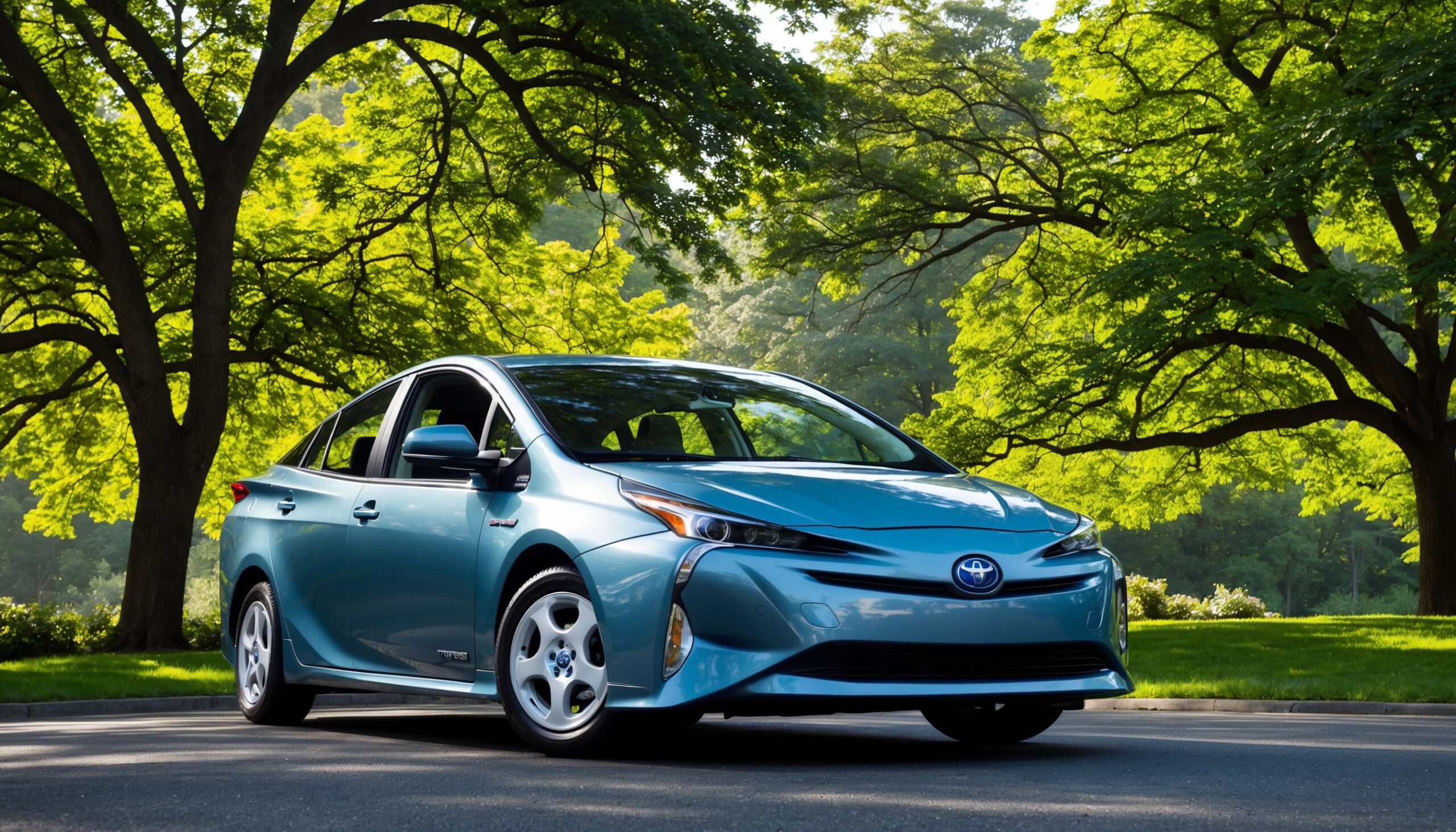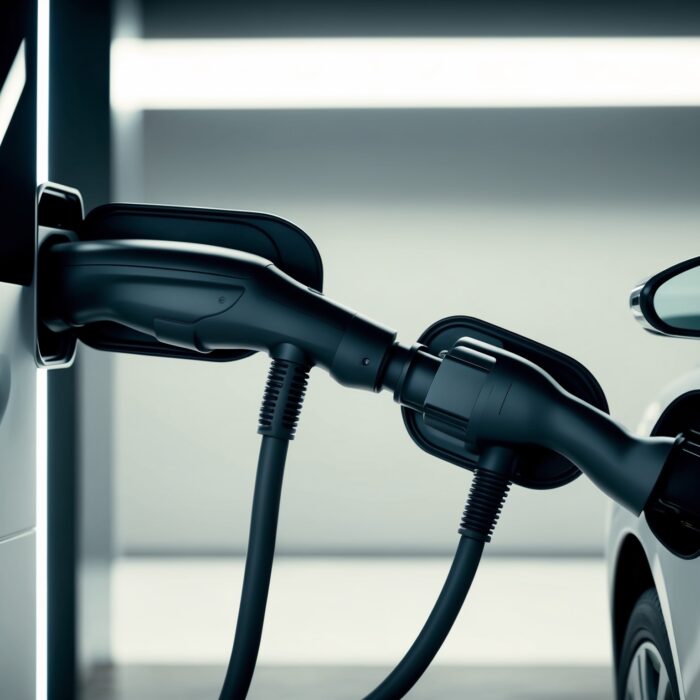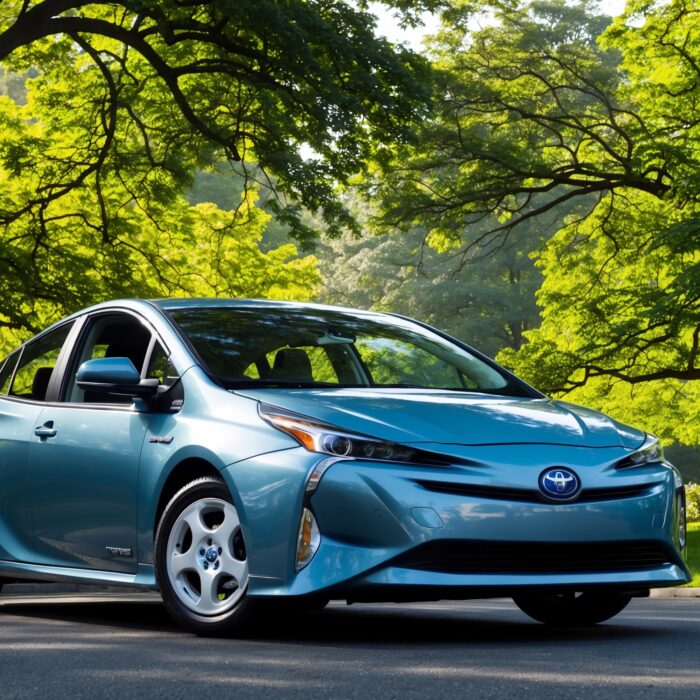Analyzing the Total Carbon Footprint of an EV vs. an ICE Vehicle
As car enthusiasts, we often find ourselves debating the merits of different types of vehicles. One of the hottest topics in the automotive world today is the comparison between electric vehicles (EVs) and internal combustion engine (ICE) vehicles. With the growing concern over climate change and environmental impact, understanding the total carbon footprint of these vehicles is more crucial than ever. In this blog post, we’ll dive deep into the nitty-gritty of emissions, energy consumption, and the overall impact of both EVs and ICE vehicles on our planet. So buckle up, because it’s going to be a fascinating ride!
Understanding Carbon Footprint
Before we get into the comparison, let’s clarify what we mean by “carbon footprint.” In simple terms, a carbon footprint is the total amount of greenhouse gases (GHGs), primarily carbon dioxide (CO2), that are emitted directly or indirectly by a person, organization, or in this case, a vehicle.
When we talk about vehicles, the carbon footprint can be divided into several phases:
- Manufacturing: The processes involved in creating the vehicle itself.
- Usage: The emissions produced while the vehicle is being driven.
- End-of-life: The disposal or recycling of the vehicle once it’s no longer in service.
Now, let’s break down how these factors play out for both EVs and ICE vehicles.
Manufacturing: A Closer Look
The manufacturing phase is often overlooked but is a significant contributor to the total carbon footprint. Each vehicle, whether electric or gas-powered, requires raw materials, energy, and resources to construct.
Electric Vehicles
For electric vehicles, the manufacturing phase is heavily influenced by the production of batteries. Lithium-ion batteries, which power most EVs, require the extraction of materials such as lithium, cobalt, and nickel. This process can be energy-intensive and involves substantial carbon emissions. Studies indicate that the manufacturing of an electric vehicle can create a carbon footprint that is higher than that of a comparable ICE vehicle.
Internal Combustion Engine Vehicles
On the flip side, ICE vehicles require traditional components like engines, transmissions, and exhaust systems. While the manufacturing process might not be as energy-intensive as battery production, it still contributes significantly to the overall carbon footprint. Moreover, the extraction and refining of fossil fuels used in ICE vehicles add another layer of emissions.
Usage: Emissions While Driving
The usage phase is where the real differences between EVs and ICE vehicles become apparent. This phase accounts for the emissions produced while the vehicle is in operation.
Electric Vehicles
EVs are often touted as zero-emission vehicles. While it’s true that they do not emit tailpipe gases, their overall emissions depend on the source of the electricity used to charge them. If the electricity comes from renewable sources like wind or solar, the emissions are significantly lower. However, if the energy is generated from fossil fuels, the carbon footprint can increase.
Internal Combustion Engine Vehicles
ICE vehicles, on the other hand, are responsible for direct emissions. These vehicles burn gasoline or diesel, releasing CO2 and other pollutants into the atmosphere. The average ICE vehicle emits roughly 4.6 metric tons of CO2 per year, depending on mileage and fuel efficiency. This constant output of greenhouse gases contributes significantly to climate change.
End-of-Life: What Happens to the Vehicle?
Once a vehicle reaches the end of its life, how it is disposed of can also impact its overall carbon footprint.
Electric Vehicles
Electric vehicles can be recycled, particularly their batteries. However, the recycling process is still evolving. If not properly managed, battery disposal can lead to environmental hazards. That said, advancements in recycling technologies are making it increasingly possible to recover valuable materials from old batteries, thereby reducing their overall carbon footprint.
Internal Combustion Engine Vehicles
ICE vehicles can be recycled as well, with metal components often being reused. However, there are challenges associated with disposing of oil and other fluids that can contribute to environmental degradation if not handled correctly. Additionally, the components that are not recyclable may end up in landfills, contributing to waste.
Comparative Analysis: Total Carbon Footprint
Now that we’ve explored each phase of the carbon footprint, let’s bring it all together. A comprehensive analysis of the total carbon footprint considers all three phases of a vehicle’s life cycle.
- Manufacturing: EVs typically have a higher manufacturing footprint due to battery production.
- Usage: EVs can have a lower usage footprint, depending on the energy source, while ICE vehicles have a consistent emission output.
- End-of-life: Both vehicle types present challenges, but advancements in recycling are promising for EVs.
Studies indicate that while an EV may start with a higher carbon footprint due to manufacturing, it often makes up for it during the usage phase. Over the lifetime of the vehicle, EVs generally produce fewer emissions than ICE vehicles, especially in regions where renewable energy is prevalent.
Factors Influencing the Carbon Footprint
Several factors can influence the carbon footprint of both EVs and ICE vehicles, making it essential to consider them in any analysis:
Also Read: The Shift to "Software-Defined Vehicles" (SDVs): What Does It Mean for Drivers?
- Vehicle Type: Different models have varying efficiencies, affecting their overall emissions.
- Driving Habits: Aggressive driving can increase fuel consumption in ICE vehicles, while efficient driving can maximize EV range.
- Energy Source: The source of electricity for EVs plays a crucial role in their carbon footprint.
- Geographical Location: Different regions have varying energy mixes and recycling capabilities.
The Role of Government and Policy
Government policies play a significant role in shaping the automotive landscape. Incentives for EV purchases, investments in renewable energy, and emissions regulations all impact the carbon footprint associated with both vehicle types.
For instance, countries that promote renewable energy sources can significantly reduce the carbon footprint of EVs. Conversely, regions reliant on coal or other fossil fuels may see a higher footprint associated with EVs.
Also Read: Decarbonizing the Automotive Supply Chain: From Steel to Final Assembly
Future Trends in the Automotive Industry
As we look ahead, the automotive industry is undergoing significant changes aimed at reducing carbon emissions:
- Advancements in Battery Technology: New battery technologies promise to reduce the carbon footprint of EV manufacturing.
- Increased Use of Renewable Energy: More charging stations are powered by solar or wind, helping to lower the carbon footprint of EVs.
- Improved Recycling Techniques: Innovations in recycling can make battery disposal more efficient and less harmful to the environment.
- Emerging Alternatives: Hydrogen fuel cells and synthetic fuels are gaining traction as potential low-emission alternatives.
These trends indicate that the automotive industry is actively working to reduce its environmental impact, which is promising for both car enthusiasts and the planet.
The Bottom Line
In summary, the total carbon footprint of electric vehicles versus internal combustion engine vehicles is a complex and multifaceted issue. While EVs tend to have a higher manufacturing footprint, their operational emissions are generally lower, especially in regions utilizing renewable energy sources. ICE vehicles, while simpler in terms of emissions, consistently contribute to greenhouse gases throughout their lifespan.
As car enthusiasts, understanding these differences is crucial for making informed decisions about the vehicles we drive. At Torque Feed, we believe that knowledge is power, and being aware of the environmental impact of our automotive choices can lead us toward a more sustainable future.
As the automotive landscape continues to evolve, it will be exciting to see how these trends shape the vehicles of tomorrow. Whether you’re a die-hard fan of traditional gas-powered engines or an early adopter of electric technology, the conversation around carbon footprints will only become more relevant. So let’s keep the dialogue going, embrace innovation, and drive towards a greener future!












